Dear Zazie, Here is today’s Lovers’ Chronicle from Mac Tag. Rhett
The Lovers’ Chronicle
Dear Muse,
© copyright 2020 mac tag/cowboy coleridge all rights reserved
undone
a heart,
never as it was
dancin’,
what do you have
bid you
come,
and tell me,
here i stand
there can only ever
be one want
dancin’
to carry you away
use your old lover so,
for any reason
you know
why should you not
i will not forsake
dance
and you shall have
why, then,
what you will
dance
hold so dear
as i was by chance,
and this in you
come
how say you,
will you
and we will have
and not want
take you,
by the hand,
as you are
by this dance,
we shall understand
and that soon must be
when you come,
you will see
© copyright 2018 mac tag/cowboy coleridge all rights reserved
Gone away
undone;
My heart,
never as it was
With his dances
stole her away
she will not say
Dancin’, lustful
what do you have not
Dancin’
I fear,
to carry you away
Bid them all
come hither,
And tell them,
he thinks to have
Here he stands
he shall lie with the one
Why use thy old lover so,
For any other reason
Thou long time did know
Why shouldst thou not
I will not forsake
He can dance
And he shall have
her heart in hold
Why, then, my heart
Dancin’
Held so dear
As any realm
under the sun
Then, ere I speed from hence,
I will be so bold to dance
A turn or two
For, as I was walkin’ along
by chance, I was told you agreed
‘Tis true, and this is you;
my worship comes to crave you
For she hath lovers
But he that dances
shall have her
How say you,
will you dance
And you shall have
and shall not want
But one of these must be
And far unfit
To dance with you
Take her, by the hand,
As she is
By this dance,
you shall understand
And saw you not,
have you not seen
To seek you
I cannot see you
among so many
She shall have,
if she have any
Welcome, and welcome here,
Welcome, my true, now to me
And that soon must be
when thou comes,
thou wilt see
Thou art as welcome
Why, how now
I hope you jest
No, by my troth
And, if you be
give you good-night!
I fear you caper so
I thought you had jested
and meant but a fable,
But now do I see
I wish all my friends
by me to take heed,
come not near
when you mean to see
© copyright 2016 mac tag all rights reserved
Today is the birthday of Erich Maria Remarque (born Erich Paul Remark; Osnabrück, Lower Saxony, Germany 22 June 1898 – 25 September 1970 Locarno, Switzerland); novelist who created many works about the horrors of war. His best known novel All Quiet on the Western Front (1928), about German soldiers in the First World War, was made into an Oscar-winning film. His book made him an enemy of the Nazis, who burned many of his works.
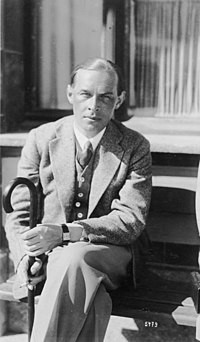
His first marriage was to the actress Ilse Jutta Zambona in 1925. The marriage was stormy and unfaithful on both sides. Remarque and Zambona divorced in 1930, but in 1933 they fled together to Switzerland. In 1938 they remarried, to prevent her from being forced to return to Germany, and in 1939 they immigrated to the United States where they both became naturalised citizens in 1947. They divorced again on 20 May 1957, this time for good. Ilse Remarque died on 25 June 1975.
During the 1930s, Remarque had relationships with Austrian actress Hedy Lamarr, Dolores del Río and Marlene Dietrich. The affair with Dietrich began in September 1937 when they met on the Lido while in Venice for the film festival and continued through at least 1940, maintained mostly by way of letters, cables and telephone calls. A selection of their letters were published in 2003 in the book “Sag Mir, Dass Du Mich Liebst” (“Tell Me That You Love Me”) and then in the 2011 play Puma.
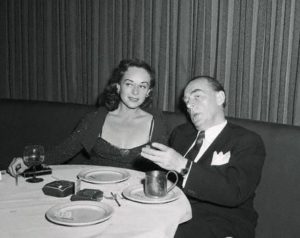 Remarque married actress Paulette Goddard in 1958 and they remained married until his death of heart collapse that had been brought on by an aneurysm in Locarno on 25 September 1970, aged 72.
Remarque married actress Paulette Goddard in 1958 and they remained married until his death of heart collapse that had been brought on by an aneurysm in Locarno on 25 September 1970, aged 72.
Remarque was interred in the Ronco Cemetery in Ronco, Ticino, Switzerland. Goddard died in 1990 and was interred next to her husband. She left a bequest of $20 million to New York University to fund an institute for European studies, which is named in honour of Remarque.
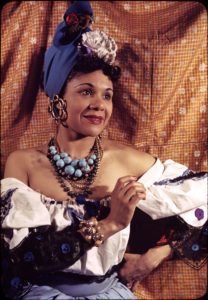 And today is the birthday of Katherine Dunham (Katherine Mary Dunham; Chicago; June 22, 1909 – May 21, 2006 New York City); dancer, choreographer, creator of the Dunham Technique, author, educator, anthropologist, and social activist. Dunham had one of the most successful dance careers in African-American and European theater of the 20th century, and directed her own dance company for many years. She has been called the “matriarch and queen mother of black dance.”
And today is the birthday of Katherine Dunham (Katherine Mary Dunham; Chicago; June 22, 1909 – May 21, 2006 New York City); dancer, choreographer, creator of the Dunham Technique, author, educator, anthropologist, and social activist. Dunham had one of the most successful dance careers in African-American and European theater of the 20th century, and directed her own dance company for many years. She has been called the “matriarch and queen mother of black dance.”
While a student at the University of Chicago, Dunham also performed as a dancer and ran a dance school, and earned an early bachelor’s degree in anthropology. Receiving a fellowship, she went to the Caribbean to study dance and ethnography. She later returned to graduate school and submitted a master’s thesis in anthropology. She did not complete the other requirements for that degree, however, she realized that her professional calling was performance.
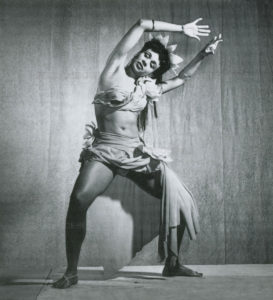 At the height of her career in the 1940s and 1950s, Dunham was renowned throughout Europe and Latin America and was widely popular in the United States. The Washington Post called her “dancer Katherine the Great.” For almost 30 years she maintained the Katherine Dunham Dance Company, the only self-supported American black dance troupe at that time. Over her long career, she choreographed more than ninety individual dances. Dunham was an innovator in African-American modern dance as well as a leader in the field of dance anthropology, or ethnochoreology. She also developed the Dunham Technique, a method of movement to support her dance works.
At the height of her career in the 1940s and 1950s, Dunham was renowned throughout Europe and Latin America and was widely popular in the United States. The Washington Post called her “dancer Katherine the Great.” For almost 30 years she maintained the Katherine Dunham Dance Company, the only self-supported American black dance troupe at that time. Over her long career, she choreographed more than ninety individual dances. Dunham was an innovator in African-American modern dance as well as a leader in the field of dance anthropology, or ethnochoreology. She also developed the Dunham Technique, a method of movement to support her dance works.
Dunham married Jordis McCoo, a black postal worker, in 1931, but he did not share her interests and they gradually drifted apart, finally divorcing in 1938. About that time Dunham met and began to work with John Thomas Pratt, a Canadian who had become one of America’s most renowned costume and theatrical set designers. Pratt, who was white, shared Dunham’s interests in African-Caribbean cultures and was happy to put his talents in her service. After he became her artistic collaborator, they became romantically involved. In the summer of 1941, after the national tour of Cabin in the Sky ended, they went to Mexico, where inter-racial marriages were less controversial than in the United States, and engaged in a commitment ceremony on 20 July, which thereafter they gave as the date of their wedding. In fact, that ceremony was not recognized as a legal marriage in the United States, a point of law that would come to trouble them some years later. Katherine Dunham and John Pratt married in 1949 to adopt Marie-Christine, a French 14-month-old baby. From the beginning of their association, around 1938, Pratt designed the sets and every costume Dunham ever wore. He continued as her artistic collaborator until his death in 1986.
Mac Tag

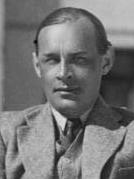
22/06/2016 at 4:12 pm Permalink
A touch of dancing made my heart sigh